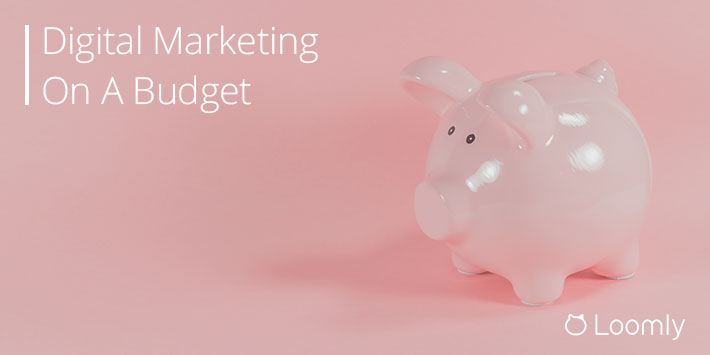In times of crisis, there are two schools of thought.
On the one hand, some think you should pause all marketing efforts to preserve cash.
On the other hand, some think you should increase marketing spend to capture market share.
Whether you need to switch to a “digital marketing on a budget” approach, or you need to scale your marketing efforts on top of what you were already doing to unlock some marginal ROI percentage points, these 20 frugal strategies will help you.
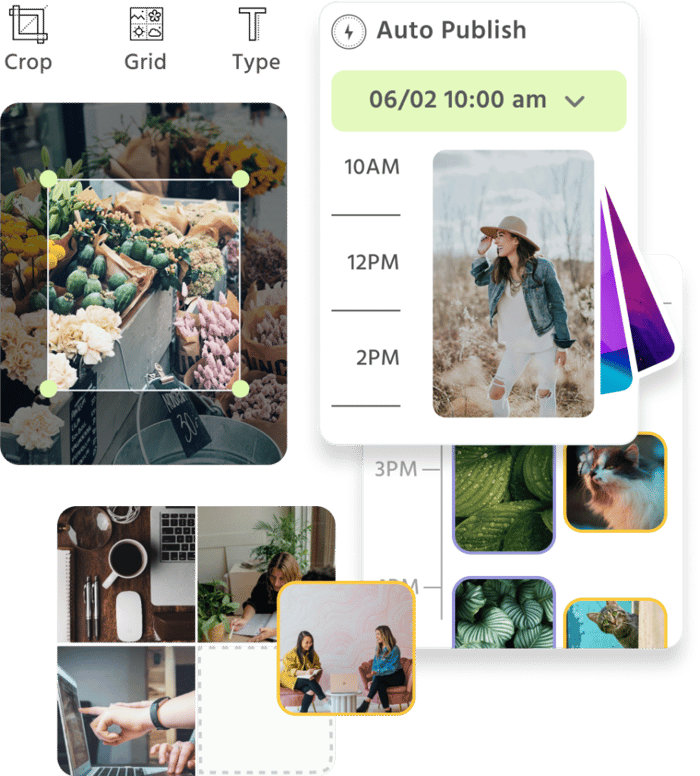
Manage all your social media accounts in one place.
Craft, schedule, & auto-post content to all your social channels, then track analytics and manage interactions from a single, easy-to-use dashboard.
Part I — Paid Channels
In this section, we’ll examine two paid channels you can use for your digital marketing:
- Social advertising
- Search advertising
Social Ads
Facebook is the most important and powerful social advertising platform. Aside from Facebook, it also includes their other channels, Instagram and Messenger, which gives you access to millions of people around the world.
Latest stats show Facebook has 2.498 million active users, with Messenger (1.300 million) and Instagram (1.000 million) not far behind:
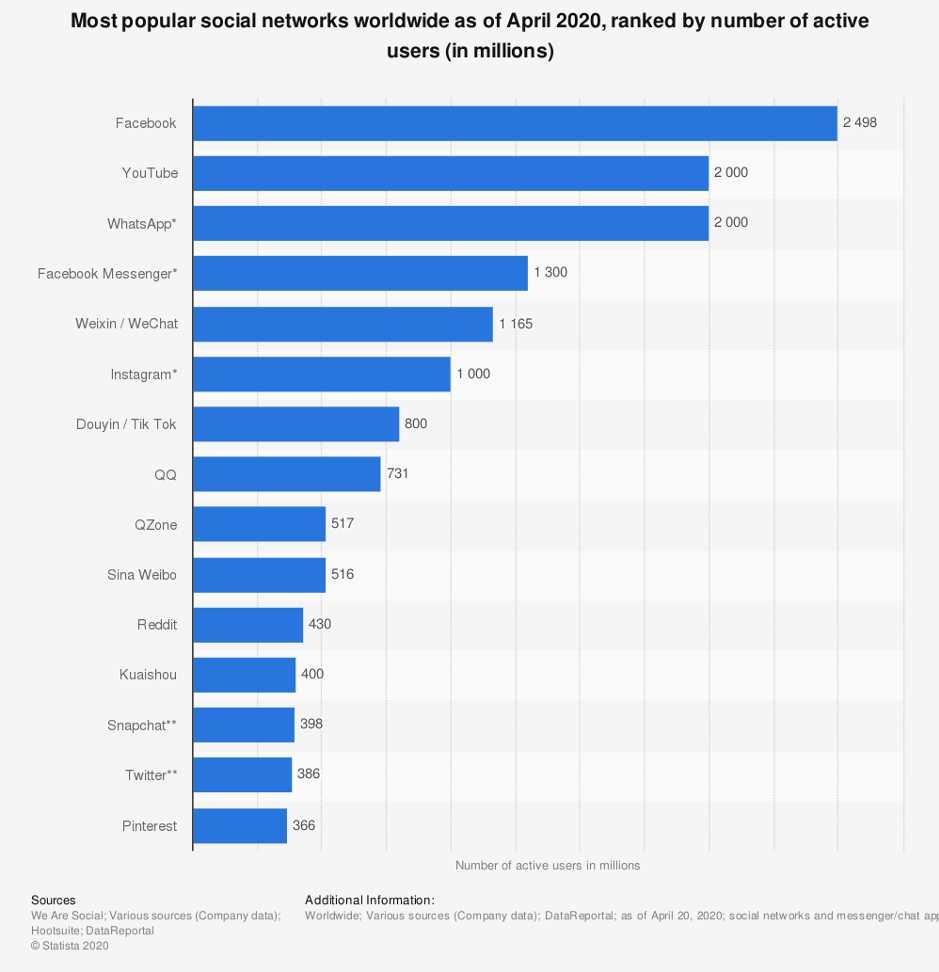
1. Install the Meta Pixel
Before you dive into creating your ads, start by installing the Meta Pixel on your website. It’ll ensure your ads are shown to the right audience, measure the results of your campaigns, and optimize your budget to drive more sales.
If you’re new to the Facebook Ads Platform, then we have a step-by-step tutorial to get you started:
- Set your campaign goals
- Define your ad set
- Build your ad: Story Ads, Photo Ads, Videos Ads, Facebook Carousel Ads & Instagram Carousel Ads
2. Run Facebook Ads on a small budget
While Facebook is an excellent platform for social advertising, you have to be careful in managing your budget. Like all advertising campaigns, if you don’t keep an eye on how the ads are performing, you can easily waste your time and money.
That’s why we recommend following the seven commandments of Facebook ads to optimize the effectiveness of your campaigns:
- Micro-target your ads and messaging.
- Maintain brand consistency throughout.
- Follow the 20% rule.
- Let users (visually) experience your product.
- Add social proof.
- Make use of clear CTAs.
- Test, test, and test again!
3. Run Instagram Ads on a small budget
The same goes for testing your Instagram ads too, especially if you have a limited budget. Lynsey Fraser uses her 4-step method to run Instagram ads on a small budget:
- Repurpose organic posts for Top-of-Funnel Instagram ads.
- Use Instagram interactions to create warm custom audiences for retargeting with Middle- or Bottom-of-Funnel Instagram ads.
- Track and test Instagram ad placements for cost return.
- Develop mobile ads that command attention and stop the scroll.
Try Loomly Ads Manager
Facebook Ads Manager is an excellent tool. As many advertisers told us they were looking to integrate their ads with the rest of their social media workflow and collaborate with their teams, we created Loomly Ads manager.
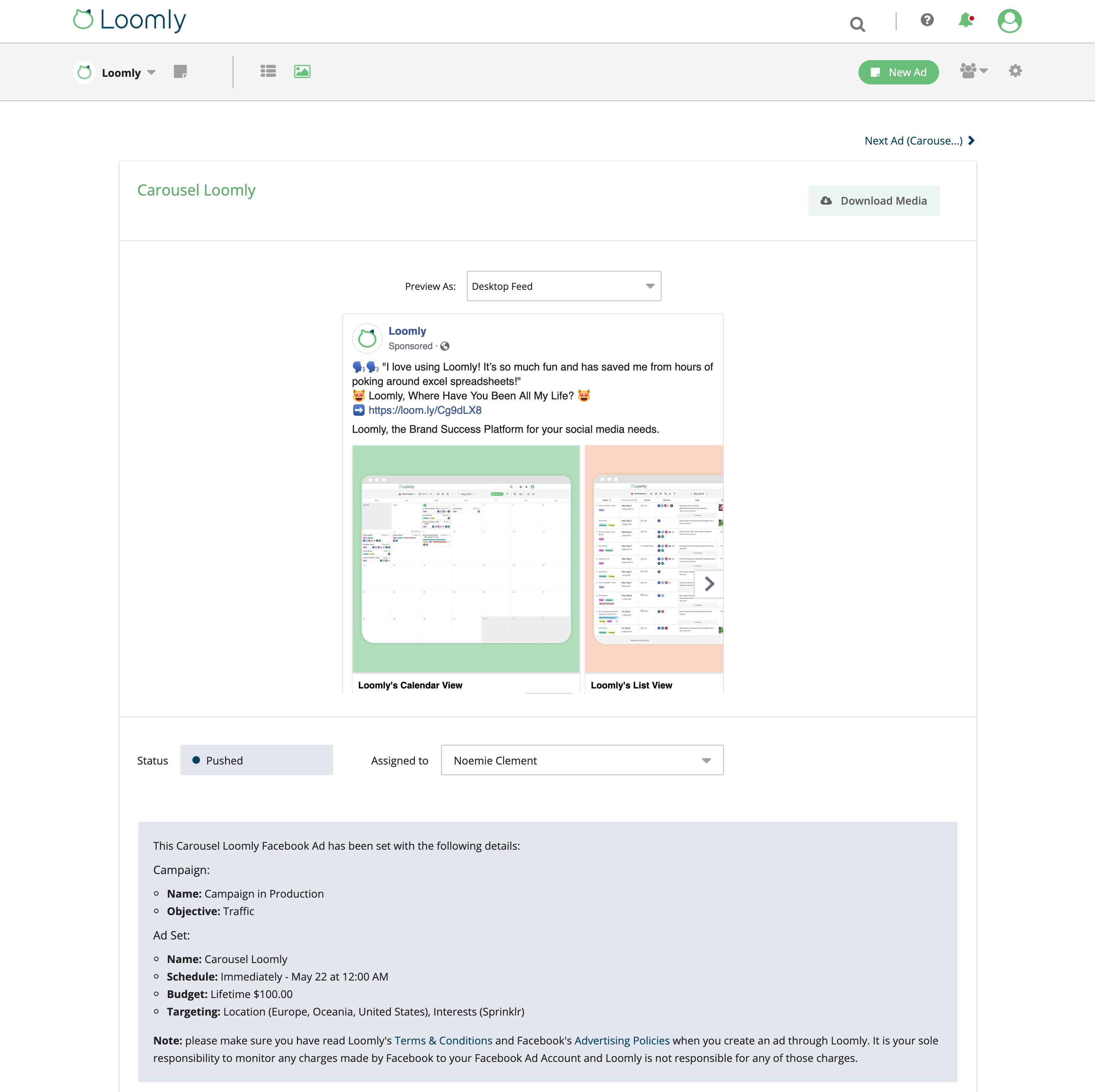
Loomly Ads Manager allows you to collaborate on, publish, and analyze Facebook & Instagram Ads from the same interface you know and love: check out Loomly Ads Manager now.
Search Ads
Paid search advertising is known by many names, including Search Engine Marketing (SEM, which also includes an element of SEO), Pay-Per-Click (PPC), Search Engine Advertising, and Sponsored Listings.
Then, you have specific platform search ad names, like Google Ads, Google Product Listing Ads, Google Shopping Ads, and Bing Ads.
When you enter a search term, such as “Nike air max” then you can see some of the different types of ads at the top of the results, denoted by “Sponsored” or starting with “Ad”:
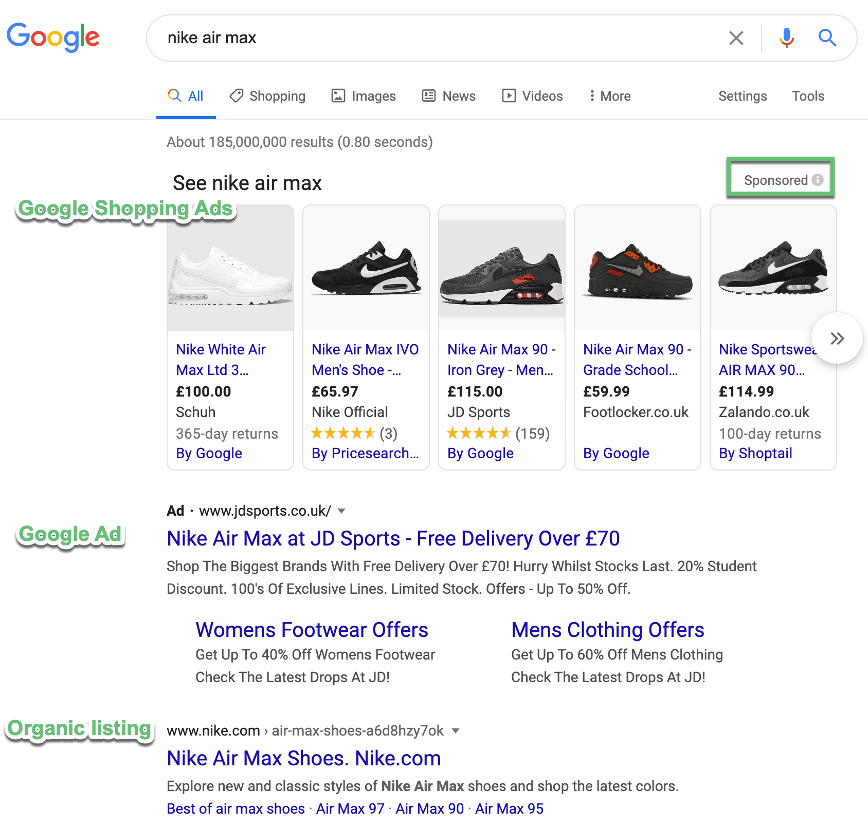
Around 45% of small businesses use PPC advertising as it’s a cost-effective way to drive traffic to your website, regardless of your budget. As the name suggests, you only pay each time a user clicks on your ad. But the cost of each click varies for different keywords (search terms) depending on three factors.
That being said, as with social advertising, if you don’t keep track of spending, then your search advertising budget could quickly run out of the control. And the key to staying within your budget is to split test your ads to see which returns the best results.
The primary benefit of using paid search advertising is that you can get your brand appearing at the top of the search engine results page faster than organic SEO efforts, which might take a few weeks or months.
As the screenshot above shows, ads always appear before the organic search results, so even if you have excellent SEO, the top organic result displays down the page. And when you consider that a lot of search takes place on mobile phones, then paid search pushes organic results further down the screen.
4. Run Google Ads on a small budget
When you get started with SEM, you can get an excellent return on a low budget Google Ads campaign by following these three simple steps:
- Use message match by keeping your copy, keywords, and offer consistent across your ad and your landing page.
- Start with a low-risk offer, instead of jumping into a sale (unless it’s an e-commerce campaign or local marketing).
- Customize the landing page for specific market segments you target.
Depending on your campaign objectives, you can use paid search to:
- Reach your target audience.
- Develop brand awareness (top-of-funnel).
- Convert buyers (bottom-of-funnel).
In summary, even with a small budget, you can use paid search to get instant results across different campaigns — and, when appropriate, scale up from there.
Part II — Organic Channels
In this section, we’ll examine some of the organic strategies you can use for your digital marketing.
- SEO Content
- Social media
- Relationships
SEO Content Marketing
We already mentioned SEO (Search Engine Optimization) in passing when we looked at Search Advertising. So let’s dig a little deeper.
SEO aims to increase organic traffic to your website from search engines.
Google uses “ranking factors” to decide which content ranks highest in the search results. From an SEO standpoint, you can optimize:
On-page factors:
- Keywords that have low competition and high search intent.
- Content types that are best-suited to your keywords and audience.
- Technical elements, such as the page loading speed and the mobile-friendliness of your site.
Off-page factors:
- Popularity, like the number of backlinks pointing to your domain.
SEO content tends to be a solid long-term strategy that keeps on working, while search advertising operates more as a pay-to-play approach to getting traffic instantly to your website: both strategies complement each other very well and most successful companies tend to leverage them in combination.
According to a survey by Neil Patel of 208 companies generating over a million dollars in sales suggested that SEO/Content Marketing provided the best ROI in the long-run and that Facebook Ads were generating a slightly better return on ad spend over Google Ads:
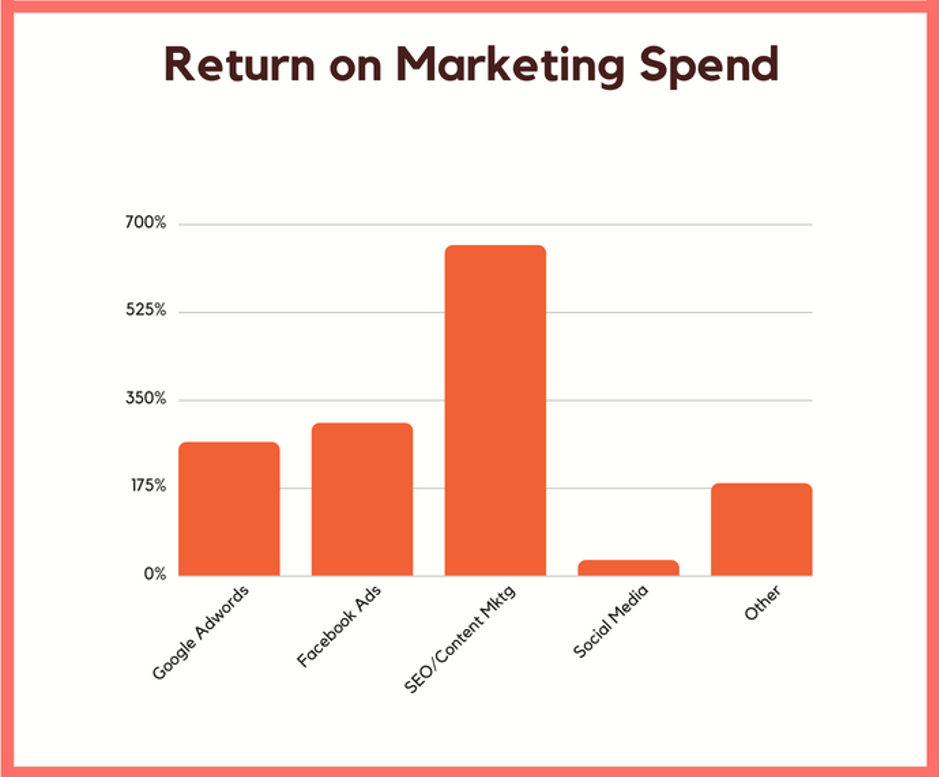
5. Start with an SEO audit
Before you start planning content, it’s a good idea to get a benchmark of your website. There are quite a few tools you could use, such as SEMrush or Ahrefs, but if you have a limited budget, then try the SEO analyzer tool from Ubersuggest.
You can check your website, and compare it with your competitors, to see what’s working and what needs attention:
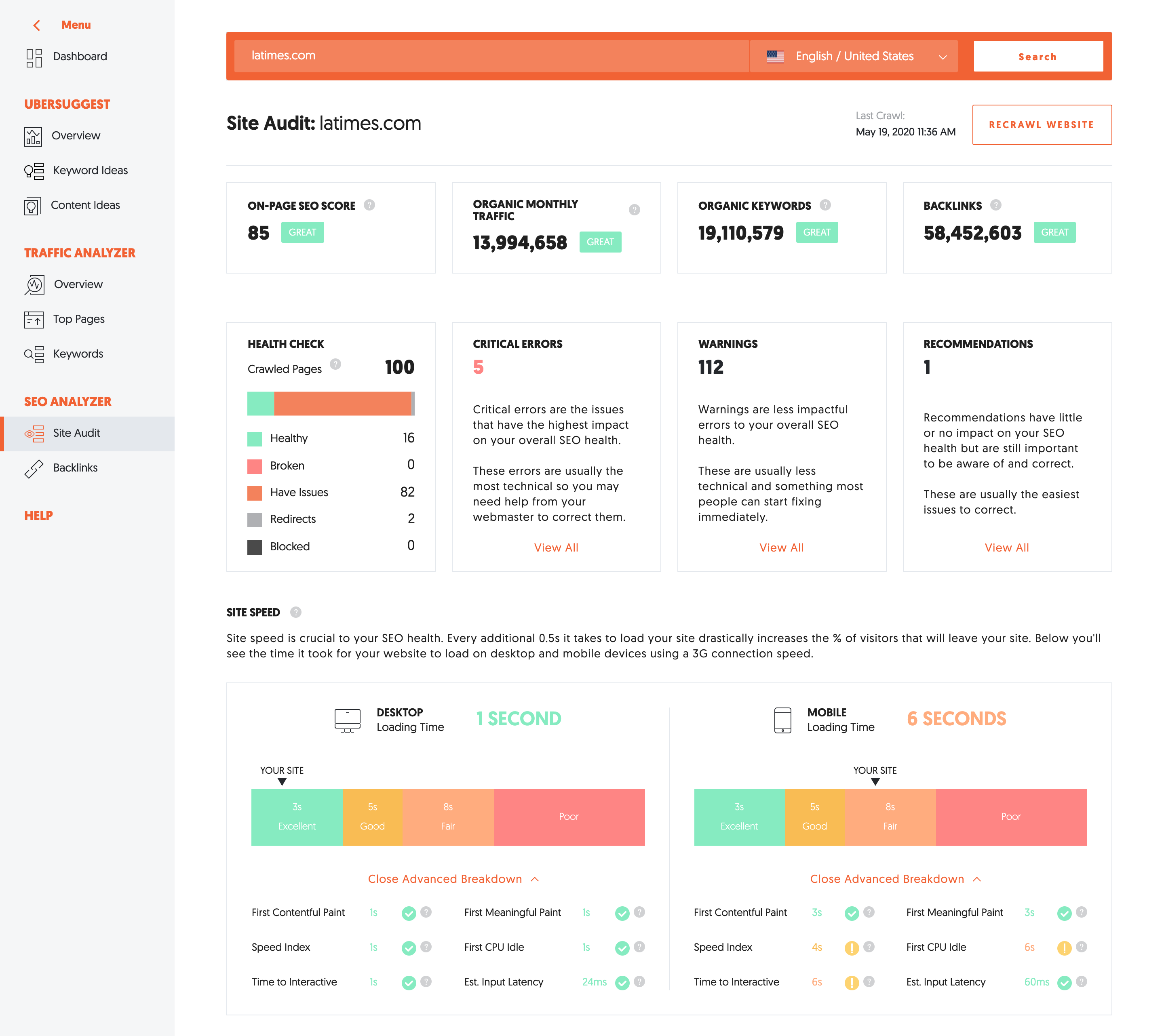
For example, you may have pages with missing title tags or duplicate descriptions that need fixing.
6. Perform keyword research
Once you’ve got your site working in tip-top condition, you can start researching keywords for your content. Staying with Ubersuggest, you can enter a keyword idea and get some suggestions and related search terms. Plus you can see how difficult it’s going to be rank for a search term:
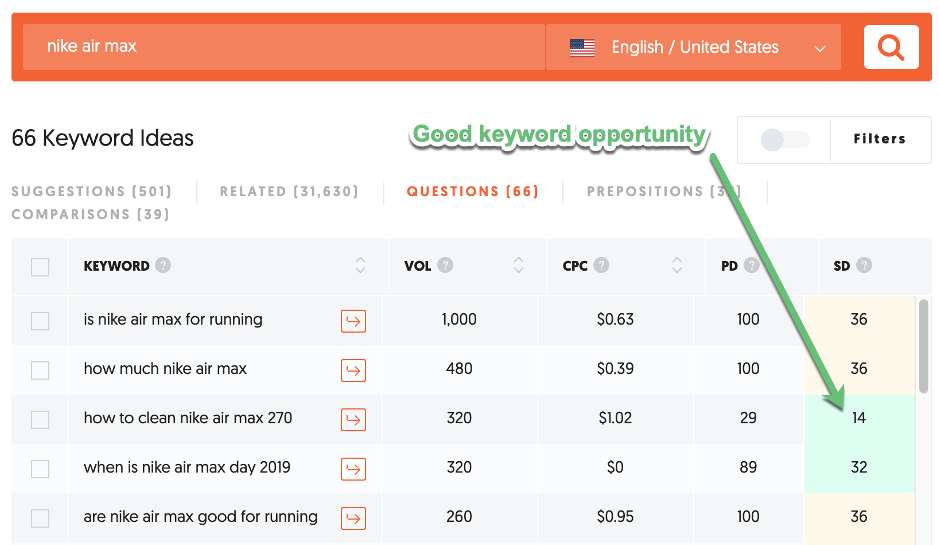
7. Publish valuable content on your blog
Armed with some relevant keywords, you can start publishing content on your blog to help position your brand as a trustworthy and reliable source of information.
Use your blog content to educate and inform customers on industry trends, answer their questions, and provide in-depth guides that link to your product or service, as well as sharing product updates and announcements.
Email Marketing
Email remains one of the most cost-effective and powerful marketing channels. Results from the DMA 2019 Survey showed that ROI from email marketing now stands at just over £42 for every pound spent:
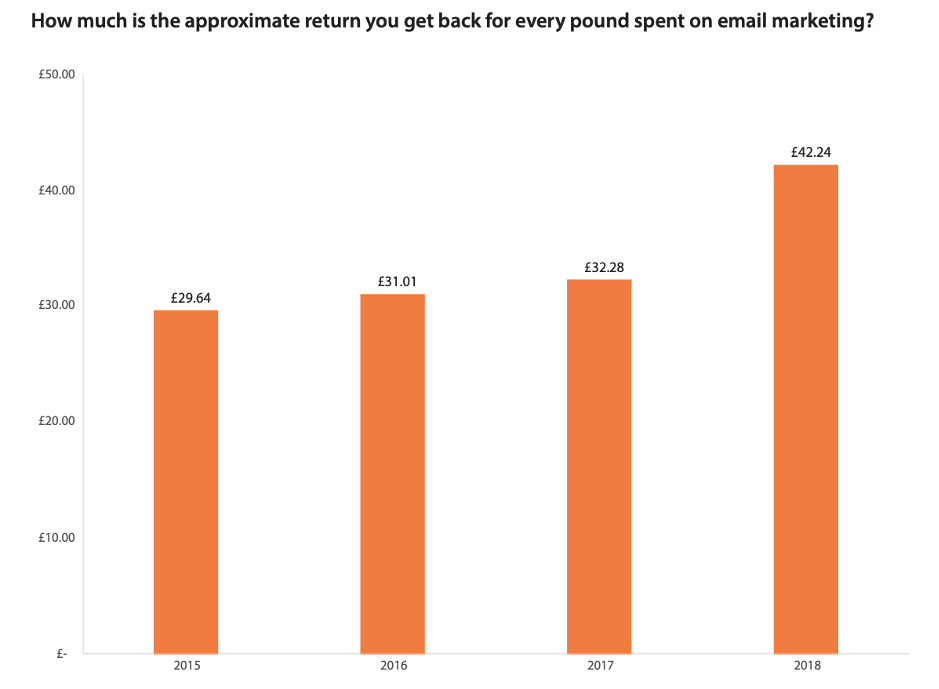
8. Email your subscribers
Start by building a segmented list of email subscribers so you can quickly identify prospects and customers. From there, you can send targeted email campaigns to keep them engaged.
For leads, you’ll want to encourage them to learn more about your business and move them down the funnel. For existing customers, you’ll want to keep them informed of product and service updates and turn them into loyal fans.
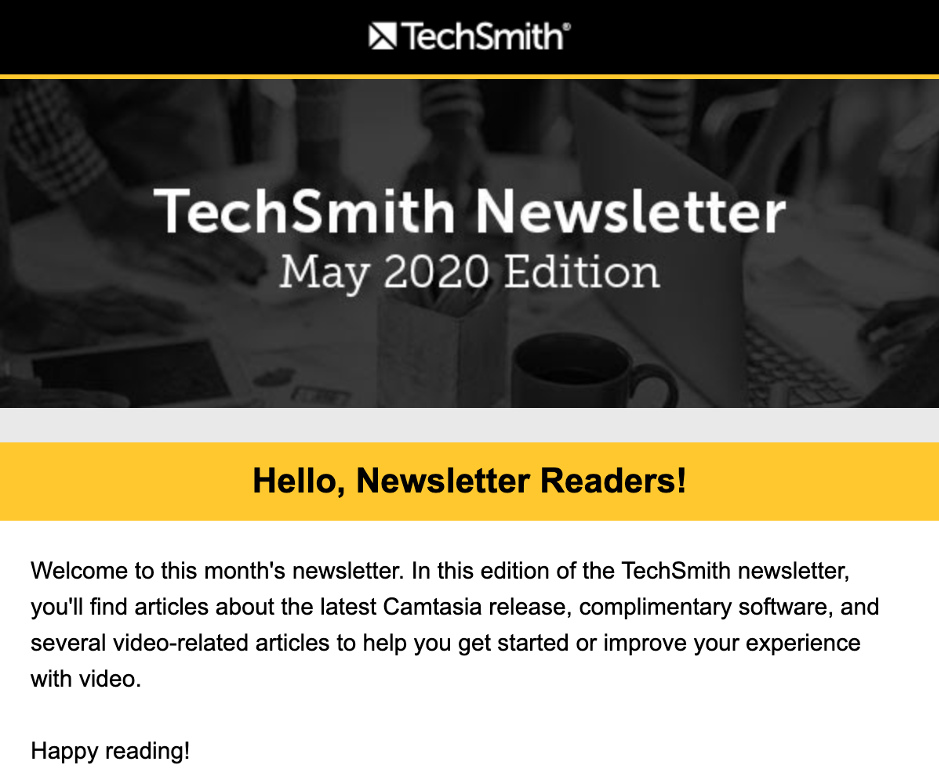
9. Use an email signature
One simple and underused tactic with email marketing is to use an email signature with links to your website, social profiles, and any special offers:
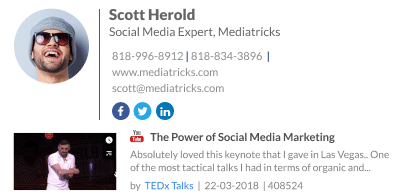

Wisestamp says customized email signatures get:
- 32% more email replies
- 10% increased social reach
- 15% increase in leads
- 22% more clicks
Social Media Marketing
Social media is still an extremely effective way to get more visibility and ultimately increase traffic and sales.
What counts as an effective ROI depends on your goals. Here are a few metrics to consider:
- Income generated: are you bringing in more income than you spend?
- Brand awareness: is the number of people who know about your brand growing?
- Customer satisfaction: has social media influenced how people view the company?
- Growth rates: has social media impacted the year-on-year growth of sales?
- Conversion rates: are you convincing enough people to take the right action?
Here are a few ways you can use social media within a tight budget and achieve your goals.
10. Focus on the most relevant social networks for your brand
As the number of social networks continues to grow, it’s all too easy to think you need to be everywhere. But that’s not a good strategy. So start by focusing on the most relevant social networks for your brand. That means using the networks where your audience hangs out.
11. Run one experiment at a time
When you try new things on social media, only run one experiment at a time. It’s the only way to know which changed variable – e.g. frequency, timing, content type – has the impact (or not) you were expecting.
12. Explore new networks
While you should focus on relevant networks, it’s also good to explore new networks. For instance, say you wanted to reach a young, vibrant audience, then it might be worth looking at TikTok. Or perhaps you’ve been wondering how you can harness the power of video marketing with YouTube?
13. Repurpose your existing content
You don’t always have to create and share new content on social media.
For instance, you can transform existing content from Blog posts, Podcast episodes, YouTube videos, Infographics, Product images, Client case studies, and Customer testimonials into original social media updates with minimal time and effort.
Look for elements in your existing content that will make attractive, informative, or entertaining standalone pieces of content.
For example, we took the book covers from The 10 Books Every Social Media Marketer Should Read, and turned them into an Instagram slider:
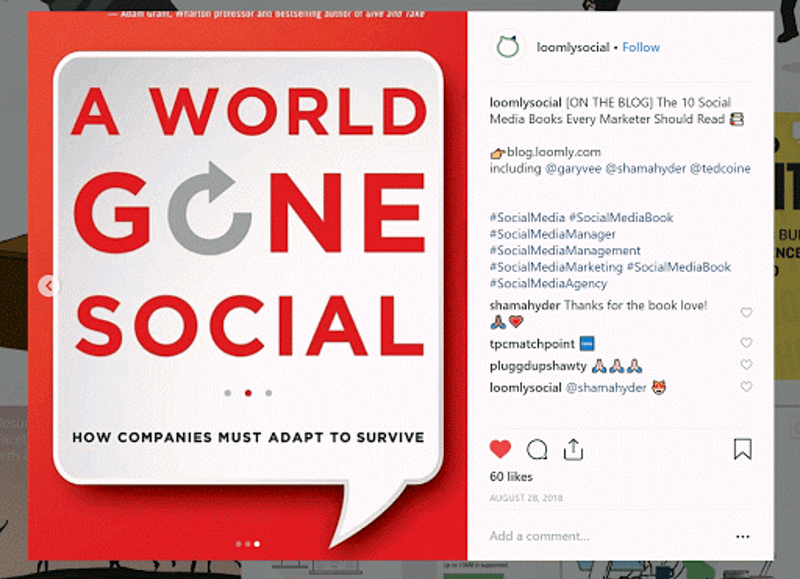
14. Remember to tag your products
If you’re featuring your products in social media posts, remember to tag them, so customers have a direct path to your online store. It’s possible to link Facebook, Instagram, and Pinterest with various online platforms like Shopify, Squarespace, and WordPress.
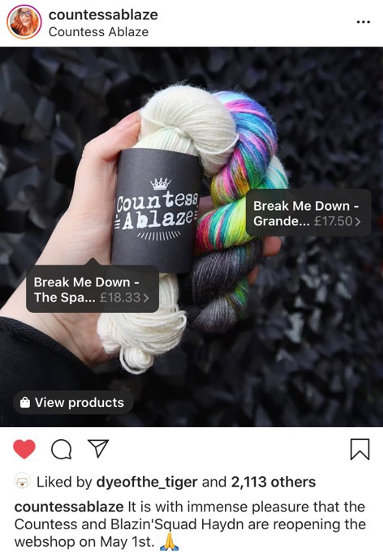
15. Refine your social media workflow
Research shows that 20 – 30% of a company’s revenue can be wasted on inefficient workflows.
So you may want to consider refining your social media workflow, so that it’s understood and approved by all team members, with our comprehensive free guide.
16. Participate in social groups, communities, and forums
Online groups and forums give you the chance to share your expertise and build brand authority. You’ll have to invest some time getting involved in discussions and resist the temptation to drop links unless it’s appropriate.
Look for active groups that have good moderation, and use the platforms that suit your brand:
Relationship Marketing
Building relationships with other digital brands and influencers is another marketing channel worth pursuing. It’s going to take your time to invest in other people and build two-way relationships, but the long-term benefits can be quite rewarding.
17. Use influencers to promote your brand
Influencers are social media users who can impact the purchase decisions of their audience. As a brand, you can leverage this to increase the effectiveness of your marketing campaigns.
For example, GymShark grew its brand by connecting with fitness-focused Instagram influencers to help them promote their products to a targeted and engaged audience.
18. Comment on relevant content
Commenting on the top blogs and social posts in your niche helps to grab the attention of other commenters and the brand itself.
It’s a good way to start building relationships. When you leave useful and relevant comments, other people begin to take notice, get curious, and check out your social profiles and website.
Plus, you might even get an invitation to write a guest post.
19. Guest post on industry blogs
Writing guest posts on relevant industry blogs is another way to build the authority of your brand. And, as a bonus, you should get a backlink to your website to help build your domain authority.
There’s a right and wrong way to approach guest blogging. Check out how Alexandra Tachalova from Digital Olympus recommends putting your guest blogging on steroids.
20. Contribute to HARO as an expert
Another PR opportunity is to use sites like HARO to position yourself as an expert. Reporters are always looking for sources of information and use HARO to make such requests.
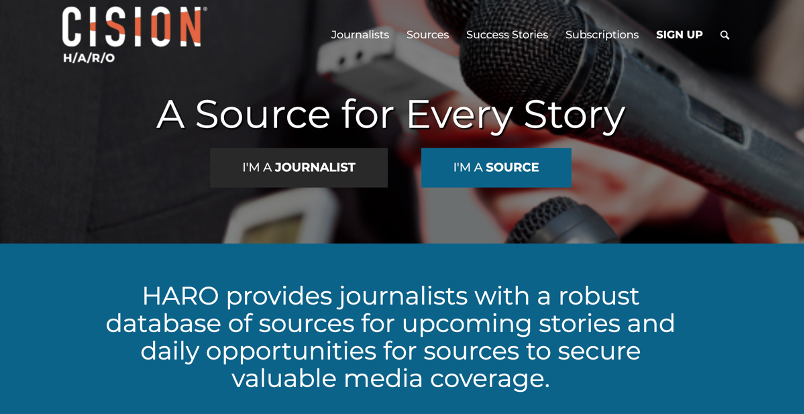
You can position yourself as an expert and build your brand by answering their questions and getting featured on various platforms, such as blogs, podcasts, newspapers, radio, and television.
Digital Marketing on a Budget, in a Nutshell
Here’s a quick recap of the frugal digital marketing strategies we’ve covered today:
- Install the Meta Pixel
- Run Facebook Ads on a small budget
- Run Instagram Ads on a small budget
- Run Google Ads on a small budget
- Start with an SEO audit
- Perform keyword research
- Publish valuable content on your blog
- Email your subscribers
- Use an email signature
- Focus on the most relevant networks for your brand
- Run one experiment at a time
- Explore new networks
- Repurpose your existing content
- Remember to tag your products
- Refine your social media workflow
- Participate in online communities
- Use influencers to promote your brand
- Comment on relevant content
- Guest post on industry blogs
- Contribute to HARO as an expert
In short: frugal does not necessarily mean cheap and working on a budget does not necessarily mean zero budget.
You have to weigh up your options and decide which strategies are going to get the most bang for your buck.
